How To Pick Basil From Garden

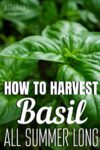
Growing basil, how to pick basil leaves, how to use basil. It's all right here, folks. It's a favorite summertime herb and rightfully so!
Have a big bunch of basil? Try making my family's favorite pesto recipe!
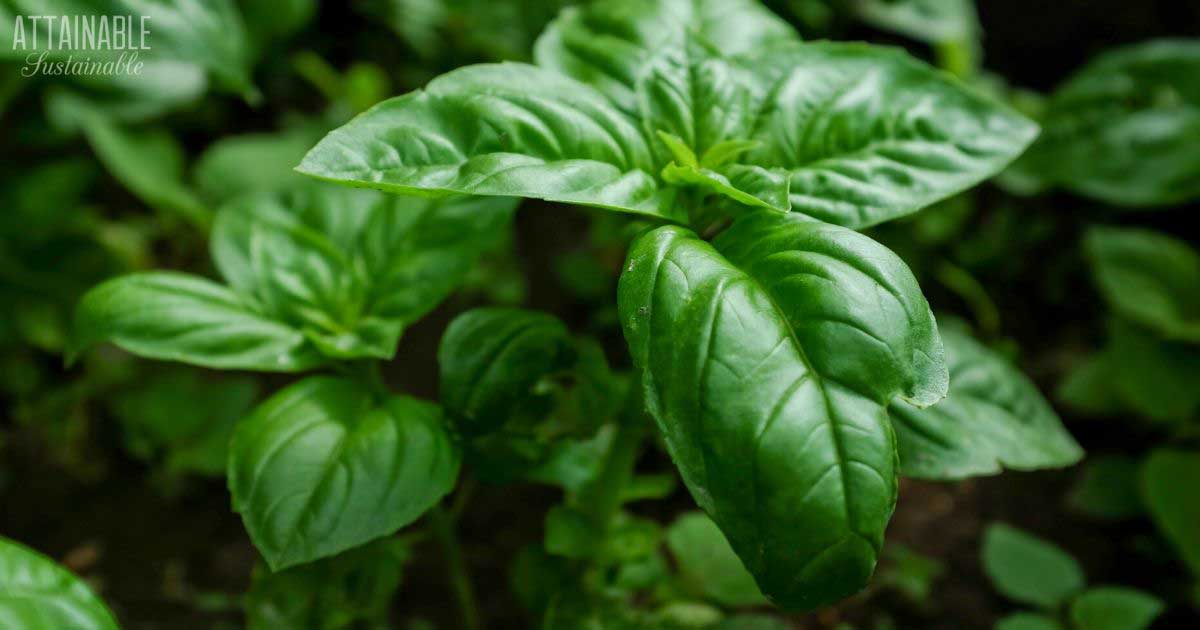
Years ago an old farmer told my young boys that when they started dating, a big bunch of sweet basil in the car would win a girl's heart. Now, I don't know about that, but growing and harvesting basil is one of my favorite summer garden activities. The fragrance definitely makes me happy!
Sweet basil is a culinary herb used frequently in Italian cooking and is the base for our favorite pesto. It's not the only type of basil, though. There are dozens of different cultivars to choose from. Some are purple, some are ruffled, and some, like Thai basil, are favored for specific cuisines. Pictured above is my African blue basil.
Basil is one of those wonderful garden plants that just keeps on giving. Unlike radishes and beets that are done once you harvest them, basil plants provide their pungent goodness for months if you treat them right.Harvesting basil so that it produces all summer long is easy.
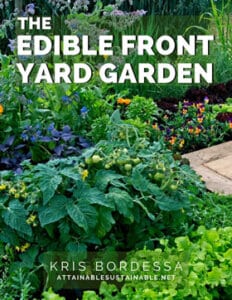 The Edible Front Yard Garden
The Edible Front Yard Garden
Does your homeowners association prevent you from growing food in the front yard? What if they never even KNEW? My ebook, The Edible Front Yard Garden will show you how!
Growing basil
Basil likes warm weather, tolerates heat, and prefers well-drained but moist soil. Direct sow seeds after your last frost date, once the ground has warmed. Trust me; trying to get a jump on it by planting too soon will just waste basil seeds.
Grow Some Greens!
Ready to grow fresh greens, no matter WHERE you live? Sign up for my
FREE quick-start guide and start growing some of your own food!
Get the Guide!
If you opt to start basil seedlings for transplanting into the garden later, a grow light and a heat mat to increase the soil temperature will greatly improve your odds. Plant basil seeds or seedlings in full sun. Water deeply and regularly, and side dress with compost or well aged manure.
Go here to learn more about propagating basil and how to turn one basil plant into many.
Basil varies in height a bit based on variety, but most basil plants grow about one to two foot tall.
Varieties of basil to grow
There are numerous varieties of basil to plant in the garden. Genovese basil is the popular heirloom that many of us plant in our gardens (it's a favorite for making pesto), but there are a dizzying number of other basil varieties to choose from.
There's large leaf basil, curly leaf basil, frilly basil, and purple basil. Then there are basil varieties that feature other flavors, such as lemon basil, cinnamon basil, clove basil, and lime basil.
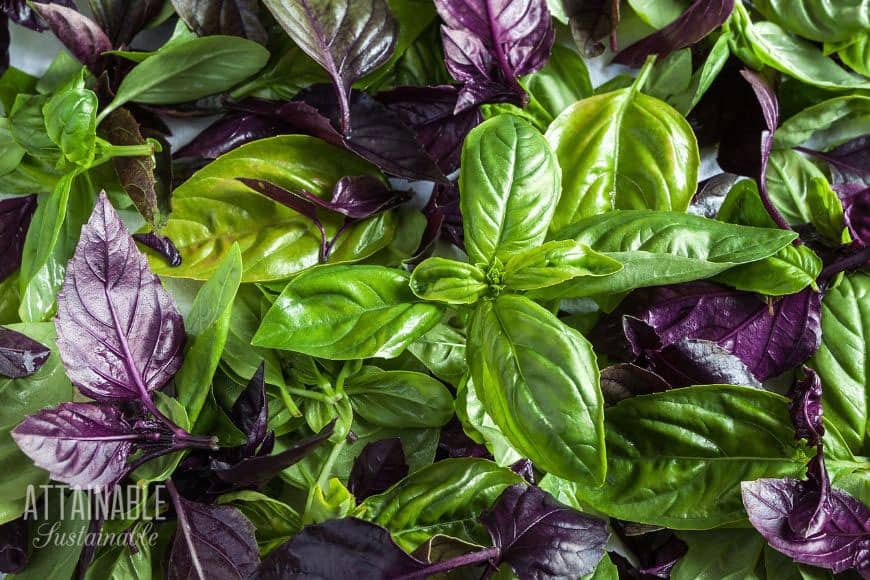
Basil varieties to look for include:
- Genovese basil
- Thai basil
- Cinnamon basil
- African blue basil (perennial in warm climates, shown at top)
- Holy basil
- Lemon basil
There are many named varieties of basil from different origins.
Harvesting basil
These rules for harvesting basil apply for growing basil indoors, too, though an indoor basil plant might not need to be trimmed as frequently since it's unlikely that it will grow as vigorously inside as it would in a sunny garden bed. Basil can also be grown as microgreens!
When to harvest basil
You can harvest basil from a healthy, mature plant just about any time. Harvest the basil leaves you want to use in recipes as you need them.
When flower buds start to form on a mature plant, it's time to really prune your basil. If the plant is allowed to flower, it will put energy into trying to regenerate itself by making seeds. Pruning basil prevents that, so you'll have a basil harvest all summer long.
If you see flower heads beginning to form on a young plant, pinch them off. Pinching the flower heads off prevents the plant from putting energy into producing seeds, allowing it to grow more foliage.
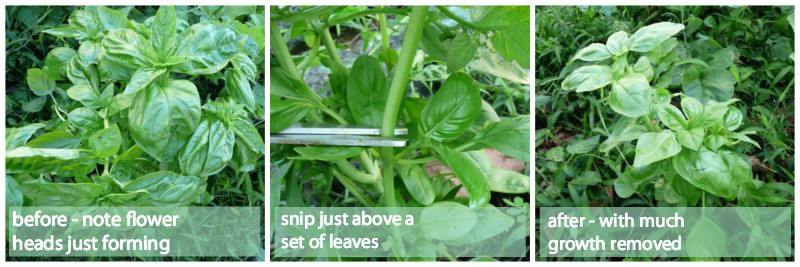 How to pick basil leaves for continued growth
How to pick basil leaves for continued growth
Harvesting basil needs to be doneregularly. Regular harvesting inhibits flower production on growing basil plants so the plant will continue to produce leaves and provide an abundant basil harvest.
Here's how to trim basil: Simply use scissors to prune off the upper leaf clusters. Make your cut close to the set of leaves below. No scissors? It's perfectly okay just to pinch the basil from the plant with your fingers.
Often, you'll need to cut more than one leaf cluster, and that's okay. Just be sure to snip right above the set of leaves you're planning to leave on the plant. New growth will sprout from that point, allowing you to harvest throughout the season.
You'll want to make sure to leave some green growth so that the plant can do its photosynthesis thing, but the plant will be noticeably smaller. Prune basil every week or two, to keep your plant healthy. The cut stems and leaves are your basil harvest.
I have almost a dozen plants and these provide enough basil every time I harvest to make two batches of pesto – one to eat fresh, one for the freezer.
Besides girls and pesto and Italian food, here's another reason to grow basil: bees.
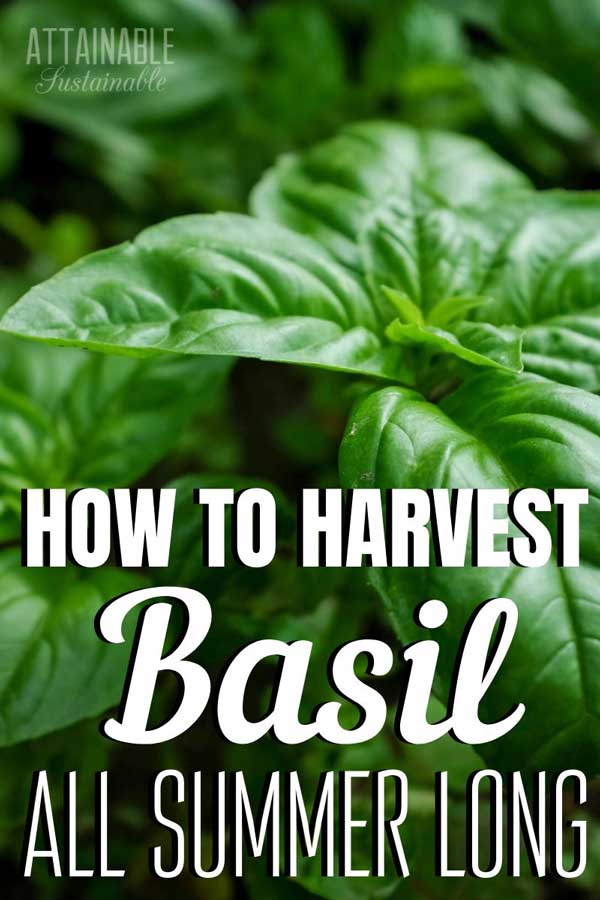
Bees love it when you grow basil
While we humans love growing basil for its pungent leaves, the bees love it for the flowers.
Trouble is, in order to maintain a continuous harvest of sweet basil leaves growing all summer long, the flower heads need to be removed. Allowed to flower, the plants will go to seed and stop producing those fresh lovely leaves.
Luckily, there's an easy solution. Plant several extra basil plants. Once you've harvested the first batch of leaves, allow a few plants to go into flowering mode.
The bees will appreciate it, and you can continue harvesting leaves from the plants you've designated as "yours."
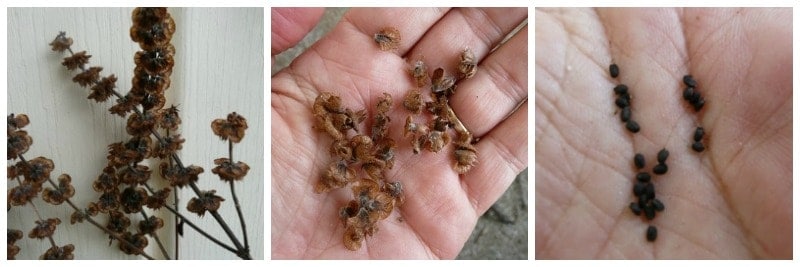
Saving basil seeds
I've had good success with saving and replanting basil seeds for a sustainable basil harvest, year to year. If you want to gather seeds, choose one basil plant as your seed producer. Let it flower and watch as those flower heads turn to seeds. Allow the seed to brown on the plant.
If wet weather threatens, you'll want to clip them and bring them inside to dry. Pull the dry seed pods from the stem. Roll dry pods around in the palm of your hand to remove the small black seeds.
Seal fully dried basil seeds in a paper envelope and store in a cool, dry place. Saving heirloom seeds from year to year is easy to do and will save you the expense of buying seeds.
Using your basil harvest
Growing basil in my garden means I use fresh basil leaves all summer long snipped into in salads, wraps, sandwiches, and for flavoring soups and pasta. By far, though, our favorite way to use it is to make pesto.
We spread pesto as a base for wraps, on egg salad sandwiches, and of course, use it in pasta dishes. I freeze pesto in small glass jars for use all through the winter months. I love adding spoonfuls of it to soup! Check out this collection of 25 basil recipes for more ideas. And consider drying some basil to flavor your meals all year long.
This post about growing basil and harvesting basil was originally published in July, 2011; it has been updated.
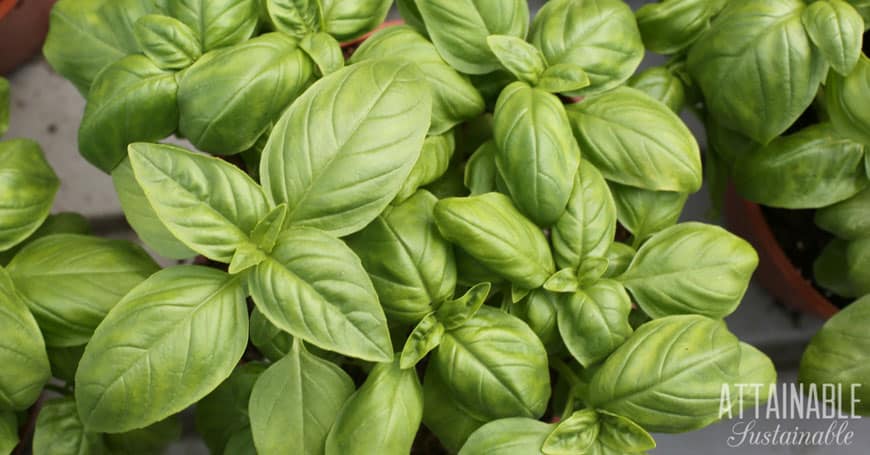
How To Pick Basil From Garden
Source: https://www.attainable-sustainable.net/harvesting-basil/
Posted by: gurleygracts1948.blogspot.com

0 Response to "How To Pick Basil From Garden"
Post a Comment